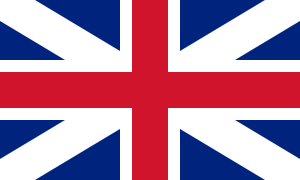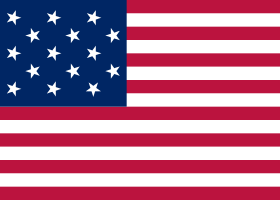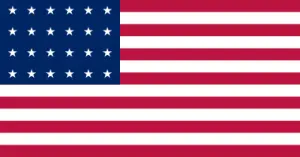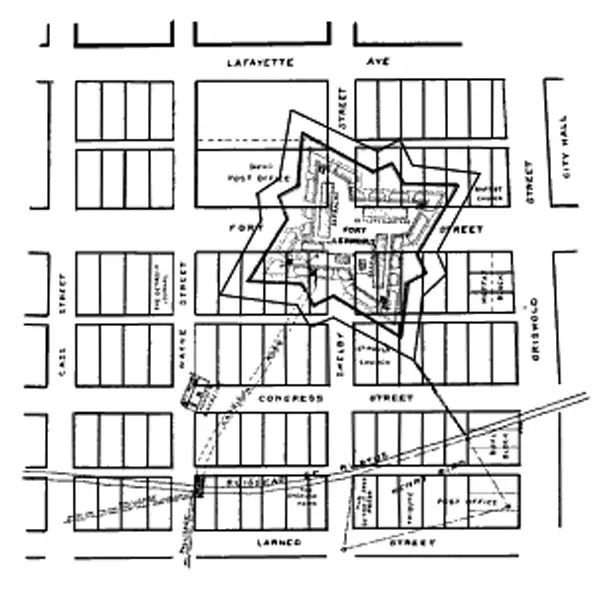
The El Moore, a historic apartment building erected in 1898 and located on the corner of 2nd Avenue and West Alexandrine, is a sustainable urban living reconstruction project slated to open in the spring of 2015. The El Moore itself is a story of Detroit; one of many stories about our city, from the past and up to today. This blog post, part of a series called “The Voices of Detroit”, relates how the 18th- and 19th-century European control of this area, first by the French, and then by the British, shaped the City as we know it today.
During the 2nd half of the 18th century, the French and the British were battling for control of the mouth of the St. Lawrence River. The British were in control of the area now known as New England, and the French controlled areas in southern and eastern Canada, and present-day Pennsylvania and Ohio, from the Niagara River to the Ohio River. In 1759, the British overtook Fort Niagara, which in turn forced the French to relinquish all fortified posts east of Fort Ponchartrain in Detroit. Seeking to fortify their hold over the Detroit area, the Canadian governor offered free tools, free land, and free livestock to anyone who volunteered to relocate to Detroit and settle here.
The Canadian governor’s plan did not go well, however, as many of the settlers sold their free incentives and moved back to Quebec. Meanwhile, members of the Iroquois and Wyandott First Nations aligned themselves with the British and attacked the French soldiers and Canadian settlers. In September 1759, the British captured Quebec, and on September 8, 1760, the British takeover of this area was complete with the capture of Montreal and the resulting Articles of Capitulation that required all French holdings turned over to the British, ending French control of Detroit. The last French commander of Fort Ponchartrain was Jean Francois Hamtramck.
By 1779, soon after the founding of the United States of America in 1776, the British built another fort, first named Fort Lernoult after the commander of the fort, Richard Lernoult, but the British ceded its control to the United States as part of the Jay Treaty of 1796.

Between 1796 and 1826, control of Detroit went back and forth between the British and the Americans four times. Fort Lernoult was renamed Fort Detroit in 1805 by then-Secretary of War Henry Dearborn; the fort was surrendered to the British by Michigan Territory Governor William Hull in 1812; it was recaptured by the Americans in 1813 during the War of 1812 and renamed Fort Shelby.

Fort Shelby was given to the City of Detroit by the British in 1826, and finally dismantled in 1827.
Recognizable names of current Detroit streets and cities in the metropolitan Detroit area include: Iroquois, Wyandott(e), Dearborn, Hamtramck, and of course Shelby—a street still in downtown Detroit near the Detroit River and Cobo Hall.

The center point of Fort Shelby was located where Fort Street and Shelby Street exist today in downtown Detroit. The boundaries of Fort Shelby are now known as Michigan Avenue, Griswold Street, W. Congress Street, and Cass Avenue. In 1961, during the construction of the Detroit Bank & Trust Building (now Comerica Bank), a wooden post from the fort was discovered, as were over 8,000 artifacts that are now housed at the Anthropology Museum at Wayne State University.
The area that was once Fort Shelby is now occupied by the Theodore Levin United States Courthouse, part of the Penobscot Building, and part of the former Federal Reserve Bank of Chicago Detroit Branch.
